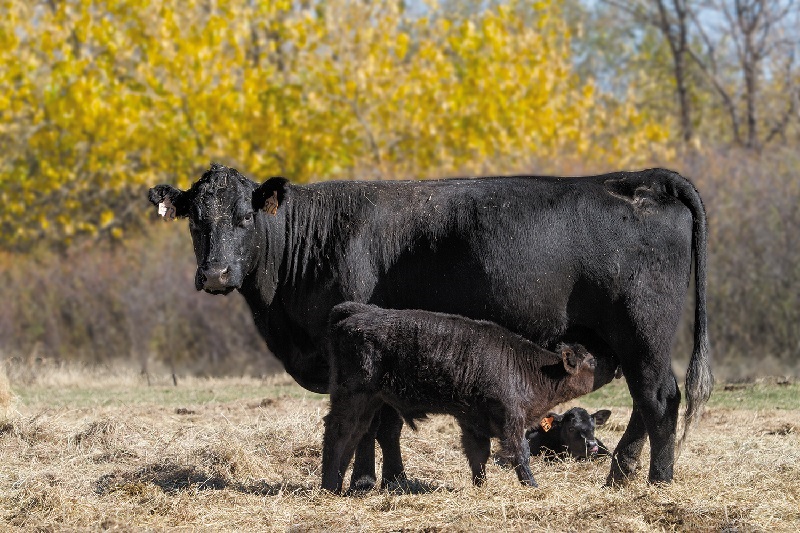
Agricultural News
Noble Research Institute Suggests First-Calf Cows Can Benefit from Weaning Calves Early
Wed, 05 Jul 2017 12:30:20 CDT
 The following is an article entitled Early Weaning Benefits First-Calf Cow, Calves, authored by Robert Wells, Ph.D., Livestock Consultant at the Noble Research Institute.
The following is an article entitled Early Weaning Benefits First-Calf Cow, Calves, authored by Robert Wells, Ph.D., Livestock Consultant at the Noble Research Institute.
The southern Plains summer heat can be hard on pastures, cows and calves, especially first-calf cows. These cows are in a special class as they are still trying to maintain body condition, actively grow, support reproduction by gestating with her second calf, and lactating. Lactation is one of the most nutritionally intensive production stages a cow goes through on an annual basis.
While the cow is trying to support all of the above physiological functions, forage quality diminishes due to grasses going into summer dormancy because of high temperatures and lack of moisture. As a result, the nutritional quality of forage is not enough to support continued growth of either the cow or calf. Early weaning of the calf can benefit both the cow and calf in this situation.
The nutritional requirements associated with lactation will cease for the cow, and the calf can be placed on a high quality feed ration that will better support its genetic potential for growth.
Advantages of Early Weaning
Early weaning of the first-calf cow can help improve body condition score going into winter and subsequently calving season of the second calf. Additionally, it can help improve calving rates and lower dystocia percentages of the second calf.
Once lactation ends, the nutritional requirements of the cow will drop by 15 to 20 percent. This allows the cow to use the excess nutrition (relative to what is needed for maintenance and gestation requirements) available in late summer and early fall forages for continued growth and regaining body condition before the harsh effects of winter become prevalent. This reduces the need for higher levels of supplementation during winter, which translates into a direct cost savings.
A cow that is not nutritionally deprived will have a better chance of carrying a calf to term. Additionally, if she is in adequate body condition at calving, she should have the necessary energy reserves to complete the birthing process unassisted.
The cow's body condition at calving of the second calf will dictate the cow's condition 60 to 90 days later when is trying to rebreed for the third calf. The effects of early weaning can carry over into enhanced conception rates for the third calf by ensuring the female goes into the third breeding season in adequate body condition to support pregnancy. It has been demonstrated numerous times in scientific literature that a female in a body condition of four or less will have greatly reduced conception rates and a longer interval from calving to rebreeding, which translates into a smaller, younger calf at weaning henceforth.
How to Manage Early-Weaned Calves
The early weaned calf should be placed on a high quality, nutritionally dense ration in order for it to meet its genetic potential for growth. These young calves are very efficient at converting feed to gain, which helps to economically support the decision to place them on feed at such a young age. Prior to the typical weaning date/age of a calf, the early-weaned calf can have feed conversion ratios that are equivalent to that of the pork industry: less than 5 pounds of feed per 1 pound of gain. Data indicates that British x Continental crossbred calves weaned at an average of 150 days of age and placed on a finishing ration will reach harvest weights greater than 1,250 pounds by 13 months of age and have a high percentage of animals that will grade choice or better. This equates to reduced days on feed, which saves money in the form of total feedlot yardage costs and feed resources used to produce the calf.
The combined amount of feed saved from reducing cow winter feed supplementation and the increased total days on feed for the calf still results in a lower total amount of feed needed through the system. Couple this with increased conception rates for the second and third calf, and the potential for older, heavier calves for the rest of the cow's life in the herd, and it is easy to see the advantage of early weaning calves off of first-calf cows when summer pastures become limiting in forage quality or quantity.
Source - The Noble Research Institute
WebReadyTM Powered by WireReady® NSI
Top Agricultural News
More Headlines...





